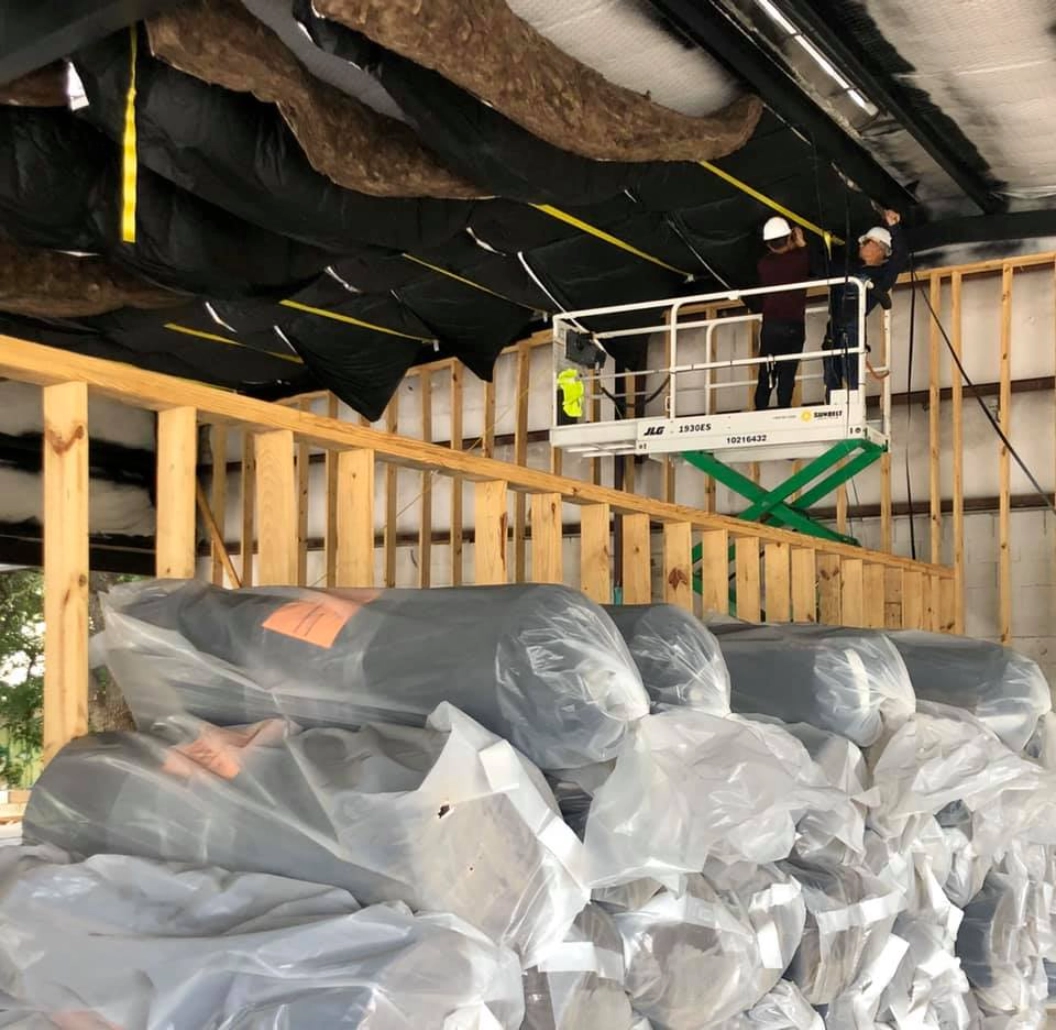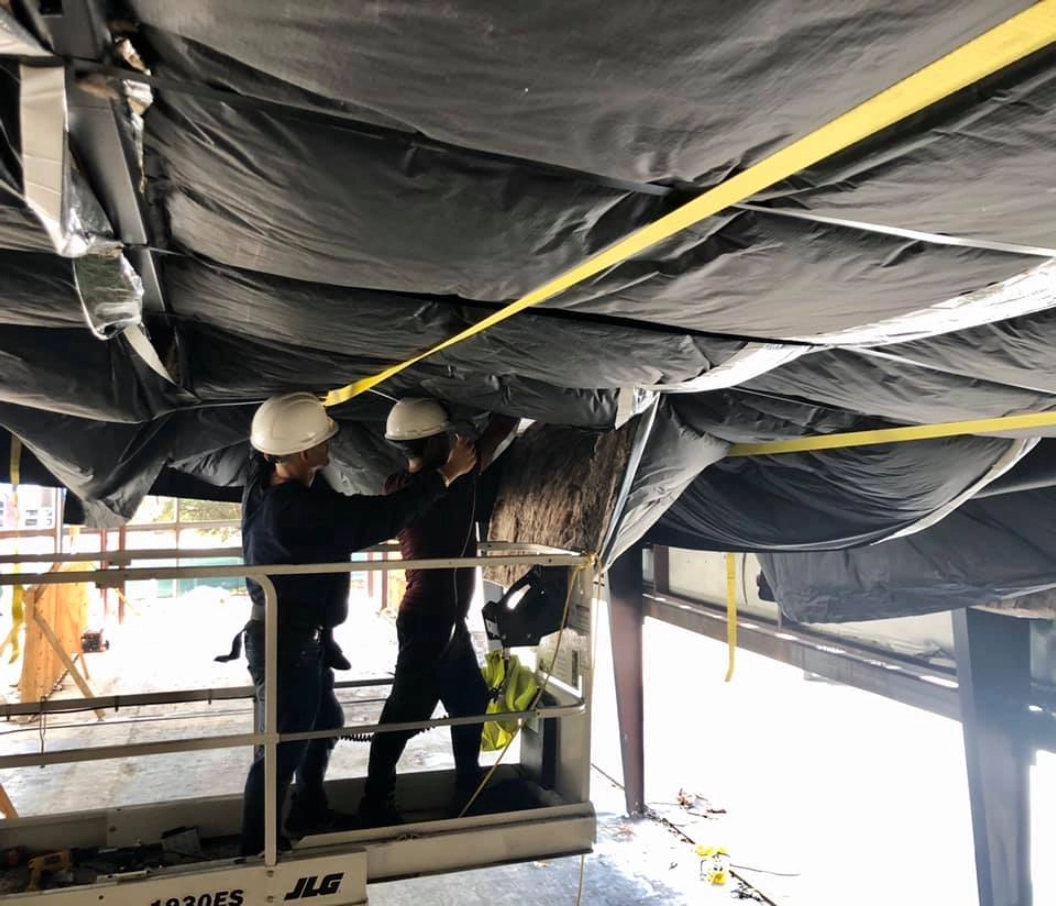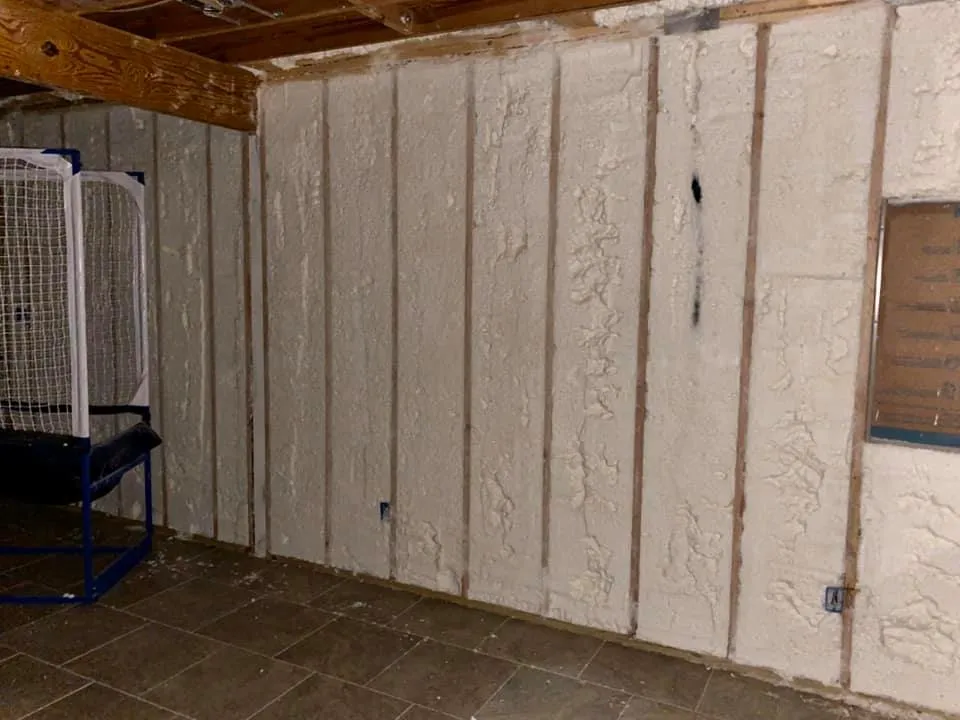Proper insulation disposal after removal protects public health, prevents environmental contamination, and ensures compliance with Hays County regulations. Improper disposal of removed insulation materials can release harmful fibers into the air, contaminate soil and water sources.
The consequences extend beyond legal penalties. Old insulation often contains asbestos, formaldehyde-based binders, or other hazardous substances that require specialized handling and disposal methods. Central Texas disposal facilities have specific protocols for different insulation types, and homeowners who attempt DIY disposal frequently face rejection at standard waste centers, forcing costly re-handling of contaminated materials.
This comprehensive guide provides practical disposal strategies based on extensive experience with insulation removal projects throughout Hays County. The information addresses regulatory requirements, material-specific handling procedures, and cost-effective disposal options that protect both property owners and the broader community.
Health Risks From Improper Insulation Disposal
Removed insulation materials pose significant health hazards when handled incorrectly. Fiberglass insulation releases microscopic glass fibers that penetrate skin, eyes, and respiratory systems. These particles remain airborne for hours after disturbance, creating prolonged exposure risks for anyone in the vicinity.
Cellulose insulation presents different challenges. Fire retardants and pest control chemicals added during manufacturing can leach into surrounding areas when disposed of improperly. The Environmental Protection Agency documented cases where improperly discarded cellulose insulation contaminated groundwater systems, particularly in areas with shallow water tables like those found throughout Hays County.
Old spray foam insulation requires the most cautious handling approach. Removal processes often leave residual chemicals that continue off-gassing for weeks after disposal. These volatile organic compounds accumulate in enclosed spaces, creating toxic environments that exceed safe exposure limits established by occupational health standards.
| Insulation Type | Primary Health Risk | Exposure Duration | Required Protection |
|---|---|---|---|
| Fiberglass | Skin/respiratory irritation | 2-4 hours airborne | N95 mask, gloves, long sleeves |
| Cellulose | Chemical exposure | 24-48 hours settling | P100 respirator, eye protection |
| Spray Foam | VOC off-gassing | 7-14 days | Full respirator, sealed clothing |
| Rock Wool | Lung irritation | 1-3 hours airborne | N95 mask, protective clothing |
Environmental Impact of Incorrect Disposal Methods
Insulation materials contain non-biodegradable components that persist in landfills for decades. Synthetic binders and chemical additives gradually leach into soil systems, creating long-term contamination issues. Studies conducted by the Texas Environmental Research Institute found that improperly disposed insulation materials contributed to groundwater contamination in 23% of tested sites across Central Texas.
The Hays County groundwater system connects directly to the Edwards Aquifer, making proper disposal critical for regional water quality. Fiberglass insulation contains phenol-formaldehyde resins that break down slowly, releasing formaldehyde into surrounding soil over 15-20 year periods. This contamination pathway affects both private wells and municipal water supplies.
Climate conditions in Central Texas accelerate the breakdown of improperly stored insulation materials. High humidity and temperature fluctuations cause rapid degradation, increasing the release rate of harmful chemicals. Rain events common during spring months can wash contaminated particles into local waterways, affecting downstream communities and wildlife habitats.
Bonus Tip: Document the condition and type of removed insulation with photographs before disposal. This documentation proves essential for insurance claims and helps disposal facilities classify materials correctly for appropriate handling procedures.
Hays County Disposal Regulations and Requirements
Hays County enforces strict regulations governing insulation disposal under the Texas Health and Safety Code. All removed insulation materials must be transported in sealed containers to prevent fiber release during transit.
The county requires pre-notification for disposal loads exceeding 10 cubic yards of insulation material. This notification system allows waste management facilities to prepare appropriate handling equipment and containment systems. Failure to provide advance notice results in automatic load rejection and additional transportation costs.
Licensed disposal facilities in Hays County maintain specialized equipment for handling different insulation types. These facilities use negative pressure systems, air filtration, and sealed processing areas to prevent environmental release during disposal operations. The Texas Commission on Environmental Quality inspects these facilities quarterly to ensure compliance with state standards.
| Requirement | Residential Loads | Commercial Loads |
|---|---|---|
| Container Sealing | Mandatory | Mandatory |
| Pre-notification | >10 cubic yards | >5 cubic yards |
| Hazmat Documentation | Asbestos only | All suspect materials |
| Transport Permits | Not required | Required >15 yards |
Approved Disposal Facilities and Procedures
Three licensed facilities in Hays County accept residential insulation disposal: Hays County Solid Waste Facility, Texas Disposal Systems, and Hill Country Environmental Services. Each facility maintains different acceptance criteria and processing capabilities for various insulation types.
The Hays County Solid Waste Facility accepts standard fiberglass and cellulose insulation in quantities up to 15 cubic yards per load. The facility operates specialized compaction equipment that minimizes fiber release during processing.
Texas Disposal Systems handles larger commercial loads and specialty materials including spray foam insulation. Their facility includes dedicated areas for hazardous material processing and maintains negative pressure systems to prevent environmental release. Disposal costs average $65 to $120 per cubic yard, with additional fees for contaminated or mixed materials.
Bonus Tip: Call disposal facilities 24-48 hours before delivery to confirm current acceptance policies. Regulations change frequently, and facilities occasionally suspend acceptance of certain materials due to processing capacity limitations or equipment maintenance schedules.
Cost Analysis of Proper vs Improper Disposal
Professional disposal services cost significantly less than penalties and remediation expenses associated with improper disposal. Average disposal costs range from $3 to $8 per square foot of removed insulation, while environmental cleanup costs from improper disposal average $15,000 to $45,000 per incident according to Texas Environmental Quality Commission data.
Improper disposal creates cascading cost increases. Initial penalties typically range from $500 to $2,500, but contamination incidents trigger additional expenses including soil testing, groundwater monitoring, and potential remediation work. These secondary costs often exceed $25,000 for residential properties and can reach $100,000+ for commercial sites.
DIY disposal attempts frequently result in higher total costs than professional services. Rejected loads at disposal facilities incur re-transport fees, storage costs, and potential contamination penalties. Equipment rental for proper handling (protective gear, containment systems, sealed transport) often exceeds the cost of hiring experienced disposal contractors.
Things to Consider Before Making a Decision
Evaluate the age and type of insulation before beginning removal projects. Materials installed before 1980 require asbestos testing, which adds 7-10 days to project timelines and increases disposal costs by $200-$500 per sample tested. This testing investment prevents much larger penalties and health risks associated with improper asbestos handling.
Consider seasonal timing for disposal projects. Spring and summer months offer more disposal facility availability and lower transportation costs due to improved weather conditions. Winter projects often face facility closures, reduced operating hours, and weather-related delays that increase total project costs.
Assess property access limitations that affect disposal logistics. Narrow driveways, overhead obstacles, or distance from road access can significantly increase removal and transport costs. Professional contractors factor these limitations into disposal planning, while DIY approaches often underestimate access challenges.
Review homeowner insurance policies for coverage of insulation disposal costs. Some policies include provisions for environmental cleanup or hazardous material handling that can offset disposal expenses. Understanding coverage limitations helps budget appropriately for proper disposal procedures.

Professional Insulation Services Stellrr Insulation & Spray Foam Provides
Stellrr Insulation & Spray Foam delivers comprehensive insulation removal and disposal services throughout Hays County. The company maintains all required certifications for hazardous material handling and partners with licensed disposal facilities to ensure regulatory compliance.
- Insulation Removal Services: Complete removal of old insulation materials using professional-grade containment systems and negative pressure equipment. This service includes proper packaging, transportation, and disposal facility coordination to eliminate homeowner liability.
- Commercial Insulation Solutions: Specialized handling of large-scale commercial insulation disposal projects with pre-notification management, hazmat documentation, and coordinated facility delivery to minimize business disruption.
- Crawl Space Insulation Services: Targeted removal and disposal of crawl space insulation materials, including moisture-damaged and contaminated materials that require specialized handling procedures.
- Residential Spray Foam Installation: Professional spray foam insulation installation that eliminates future disposal concerns through superior longevity and performance compared to traditional insulation materials.
Common Questions About Insulation Disposal
Can I dispose of small amounts of insulation in regular trash collection?
Most municipal waste services prohibit insulation materials in regular collection routes due to contamination risks and equipment damage potential. Even small quantities require proper containment and specialized disposal facility handling.
What protective equipment do I need for insulation removal projects?
Minimum protection includes N95 or P100 respirators, safety glasses, long-sleeved clothing, and nitrile gloves. Spray foam removal requires full-face respirators and Tyvek suits due to chemical off-gassing risks.
How do I identify potentially hazardous insulation materials?
Materials installed before 1980 require professional asbestos testing before removal. Vermiculite insulation, particularly Zonolite brand products, contains asbestos and requires specialized handling regardless of installation date.
What happens if disposal facilities reject my insulation load?
Rejected loads must be re-containerized according to facility requirements and may incur additional transportation and handling fees. Repeat rejections can result in penalties and forced use of higher-cost specialty disposal services.
Are there recycling options for removed insulation materials?
Limited recycling exists for clean fiberglass insulation, but contaminated or mixed materials typically require standard disposal. Cellulose insulation cannot be recycled due to chemical treatments and fire retardants.
Key Takeaways for Responsible Disposal
Proper insulation disposal protects health, prevents environmental damage, and ensures regulatory compliance while avoiding substantial financial penalties. The investment in professional disposal services consistently costs less than remediation expenses from improper handling methods.
Success depends on early identification of insulation types, appropriate containment during removal, and coordination with licensed disposal facilities. Property owners who prioritize proper disposal procedures protect their investments while contributing to community environmental health and safety standards.
Get Expert Insulation Guidance
Professional insulation removal and disposal requires specialized knowledge, proper equipment, and regulatory compliance expertise. Stellrr Insulation & Spray Foam provides comprehensive services that eliminate homeowner liability while ensuring environmentally responsible disposal practices.
Contact Stellrr Insulation & Spray Foam at (512) 710-2839 or info@stellrr.com for professional consultation on your insulation removal and disposal needs. The company’s certified technicians handle all aspects of proper disposal while maintaining strict safety and environmental standards throughout Hays County.
Frequently Asked Questions
How long can I store removed insulation before disposal?
Removed insulation should be disposed of within 72 hours of removal to prevent pest attraction, moisture absorption, and potential container degradation. Extended storage requires weatherproof containment and may trigger additional regulatory requirements.
What documentation do I need for insulation disposal?
Basic disposal requires proof of origin and material identification. Suspected hazardous materials need professional testing documentation, chain of custody forms, and disposal facility acceptance letters before transport.
Can weather conditions affect insulation disposal scheduling?
High winds, heavy rain, and extreme temperatures can cause disposal facility closures or transport restrictions. Plan disposal activities during stable weather periods to avoid delays and additional costs.
Do I need special permits for transporting removed insulation?
Residential quantities under 15 cubic yards typically require no special permits, but commercial loads and hazardous materials need transport documentation and may require commercial vehicle licensing.
What are the long-term consequences of improper insulation disposal?
Improper disposal can result in ongoing environmental monitoring requirements, property value impacts, and potential liability for future contamination cleanup costs that may extend for decades after the initial violation.





